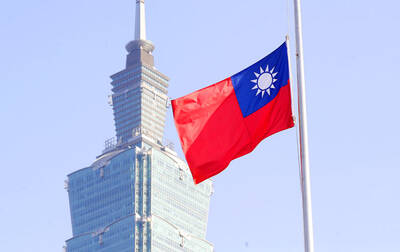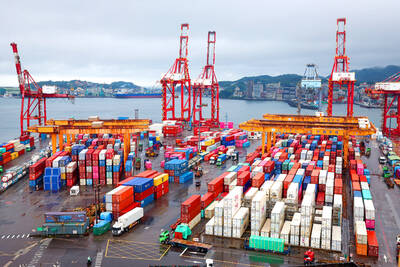HSBC Holdings Plc, Europe’s biggest bank, posted a 57 percent drop in first-half profit after setting aside US$13.9 billion to cover souring consumer loans.
Net income declined to US$3.35 billion from US$7.72 billion a year earlier, the London-based company said in a statement yesterday. That beat the US$600 million median loss estimated by seven analysts surveyed by Bloomberg.
HSBC’s takeover of subprime lender Household International Inc in 2003 contributed to the US$53 billion in provisions the bank has reported in the past three years. Hurt by soaring US bad debts, HSBC decided in March to halt consumer lending at the operation and may review the bank’s credit-card unit in the event that the US economy deteriorates. The bank also raised US$17.8 billion in an April rights offer to shore up capital.
“We expect 2009 to be the peak year of loan losses,” Michael Chang, a Hong Kong-based analyst at Deutsche Bank AG who has a “hold rating” on the stock, wrote in note to clients before the results were published. “The rate of improvement from here is naturally pivotal to near-term earnings valuations of the stock.”
HSBC rose 1.6 percent to 605.75 pence in London trading on July 31, valuing the bank at about £104.9 billion (US$176 billion). The stock has climbed 5 percent in London trading this year. In the same period, shares of London-based Barclays Plc doubled and the 63-member Bloomberg Europe 500 Banks Index advanced 32 percent.
“The timing, shape and scale of any recovery in the wider economy remains highly uncertain,” chairman Stephen Green said in the statement. “Our view continues to be cautious.”
Green said in March that HSBC regretted the decision to buy Household International, now called HSBC Finance.
“It’s an acquisition we wish we hadn’t done with the benefit of hindsight, and there are lessons to be learned,” Green told reporters during a March 2 conference call.
HSBC’s writedowns and credit-market losses are already more than twice those of Credit Suisse Group AG and Barclays Plc, according to data compiled by Bloomberg. HSBC’s US$42.2 billion since the third quarter of 2007 compares with US$20.1 billion at Barclays and US$18.9 billion for Credit Suisse.
Loan loss provisions may not peak for HSBC until next year, though the bank “is arguably the only genuine global bank, which, combined with a funding advantage, means that it is ideally placed to leverage a recovery whenever this happens,” Anil Agarwal, a Hong Kong-based analyst at Morgan Stanley, wrote in a July 17 note to investors.
Unlike RBS and Lloyds Banking Group, HSBC avoided turning to the government for a bailout during the credit crisis.

ELECTRONICS BOOST: A predicted surge in exports would likely be driven by ICT products, exports of which have soared 84.7 percent from a year earlier, DBS said DBS Bank Ltd (星展銀行) yesterday raised its GDP growth forecast for Taiwan this year to 4 percent from 3 percent, citing robust demand for artificial intelligence (AI)-related exports and accelerated shipment activity, which are expected to offset potential headwinds from US tariffs. “Our GDP growth forecast for 2025 is revised up to 4 percent from 3 percent to reflect front-loaded exports and strong AI demand,” Singapore-based DBS senior economist Ma Tieying (馬鐵英) said in an online briefing. Taiwan’s second-quarter performance beat expectations, with GDP growth likely surpassing 5 percent, driven by a 34.1 percent year-on-year increase in exports, Ma said, citing government

‘REMARKABLE SHOWING’: The economy likely grew 5 percent in the first half of the year, although it would likely taper off significantly, TIER economist Gordon Sun said The Taiwan Institute of Economic Research (TIER) yesterday raised Taiwan’s GDP growth forecast for this year to 3.02 percent, citing robust export-driven expansion in the first half that is likely to give way to a notable slowdown later in the year as the front-loading of global shipments fades. The revised projection marks an upward adjustment of 0.11 percentage points from April’s estimate, driven by a surge in exports and corporate inventory buildup ahead of possible US tariff hikes, TIER economist Gordon Sun (孫明德) told a news conference in Taipei. Taiwan’s economy likely grew more than 5 percent in the first six months

SMART MANUFACTURING: The company aims to have its production close to the market end, but attracting investment is still a challenge, the firm’s president said Delta Electronics Inc (台達電) yesterday said its long-term global production plan would stay unchanged amid geopolitical and tariff policy uncertainties, citing its diversified global deployment. With operations in Taiwan, Thailand, China, India, Europe and the US, Delta follows a “produce at the market end” strategy and bases its production on customer demand, with major site plans unchanged, Delta president Simon Chang (張訓海) said on the sidelines of a company event yesterday. Thailand would remain Delta’s second headquarters, as stated in its first-quarter earnings conference, with its plant there adopting a full smart manufacturing system, Chang said. Thailand is the firm’s second-largest overseas

SUPPLY RESILIENCE: The extra expense would be worth it, as the US firm is diversifying chip sourcing to avert disruptions similar to the one during the pandemic, the CEO said Advanced Micro Devices Inc (AMD) chief executive officer Lisa Su (蘇姿丰) on Wednesday said that the chips her company gets from supplier Taiwan Semiconductor Manufacturing Co (TSMC, 台積電) would cost more when they are produced in TSMC’s Arizona facilities. Compared with similar parts from factories in Taiwan, the US chips would be “more than 5 percent, but less than 20 percent” in terms of higher costs, she said at an artificial intelligence (AI) event in Washington. AMD expects its first chips from TSMC’s Arizona facilities by the end of the year, Su said. The extra expense is worth it, because the company is